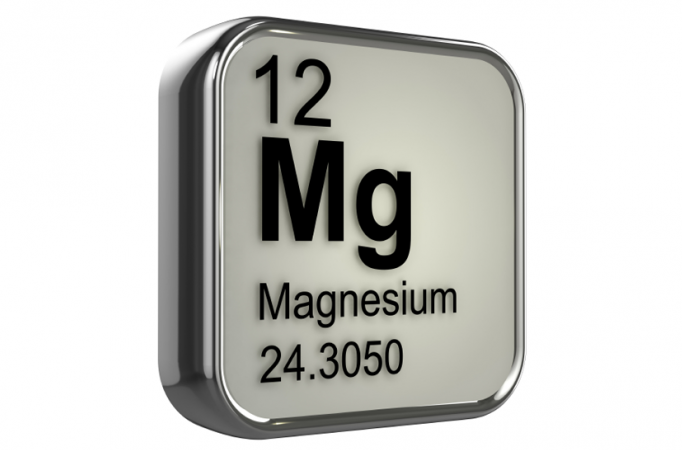Learn more on why we need magnesium in our body! Check out the article we found over at Mercola.com.
By Dr. Mercola
Magnesium is the fourth most abundant mineral in your body. More than 3,750 magnesium-binding sites have been detected on human proteins, and it’s required for more than 300 different enzymes in your body.
As is the case with vitamin D, if you don’t have enough magnesium, your body simply cannot function optimally, and insufficient cellular magnesium levels set the stage for deterioration of metabolic function that can snowball into more serious health problems.
For starters, magnesium is critical for the optimization of your mitochondria, which have enormous potential to influence your health, especially the prevention of cancer.
In fact, optimizing mitochondrial metabolism may be at the core of effective cancer treatment. But your mitochondrial function is also crucial for overall good health, energy, and athletic performance.
Common Causes for Magnesium Deficiency
A century ago, we were getting an estimated 500 milligrams (mg) of magnesium from the food we ate, courtesy of the nutrient-rich soil in which it was grown. Today, estimates suggest we’re only getting 150 to 300 mg a day from our food supply.
As noted by Patrick, eating a diet rich in calories and poor in micronutrients (read processed foods) is a primary risk factor for magnesium deficiency, for the simple reason that magnesium resides at the center of the chlorophyll molecule.
Chlorophyll, as you may know, is what gives plants their green color. Most Americans eat far too few fruits and vegetables, which may explain why more than half of the American public is deficient in magnesium.
In addition to not getting sufficient amounts from your diet, magnesium is also lost through stress, lack of sleep, alcohol consumption, and prescription drug use (especially diuretics, statins, fluoride and fluoride-containing drugs such asfluoroquinolone antibiotics).
Magnesium levels can also decline in the presence of certain hormones, such as estrogen. If you have elevated insulin levels — which an estimated 80 percent of Americans do — you’re quite likely to have low magnesium levels.
Increasing your magnesium intake may actually go a long way toward improving your condition, or warding off insulin resistance and diabetes in the first place. In one study, prediabetics with the highest magnesium intake reduced their risk for blood sugar and metabolic problems by 71 percent.
A second study also found that higher magnesium intake reduces the risk of impaired glucose and insulin metabolism and slows progression from pre-diabetes to diabetes.
According to the authors, “Magnesium intake may be particularly beneficial in offsetting your risk of developing diabetes, if you are high risk.” The mechanism by which magnesium controls glucose and insulin homeostasis appears to involve two genes responsible for magnesium homeostasis.
Magnesium is also required to activate tyrosine kinase, an enzyme that functions as an “on” or “off” switch in many cellular functions and is required for the proper function of your insulin receptors. Last but not least, digestive problems such as Crohn’s disease and leaky gut impair your body’s ability to absorb magnesium, which is yet another cause of inadequate magnesium levels.
As noted by Dr. Dean, it’s quite possible that magnesium insufficiency is part of why health problems such as heart disease, diabetes, and high blood pressure are so prevalent these days. It may also play a role in fibromyalgia, magnesium deficiency is a well-recognized factor in migraines.
How to Identify Magnesium Deficiency
Unfortunately, there’s no lab test that will give you a truly accurate reading of your magnesium status. The reason for this is that only 1 percent of the magnesium in your body is found in your blood; 50 to 60 percent resides in your bones, and the remaining is in your soft tissues.
Since most of your magnesium is stored inside your cells and bone rather than in blood plasma, there are no satisfactory blood tests for assessing it. That said, some specialty labs do provide an RBC magnesium test which is reasonably accurate.
Other tests your doctor may use to evaluate your magnesium status include a 24-hour urine test or a sublingual epithelial test. Still, these can only give you an estimate of your levels, and doctors typically need to evaluate them in light of the symptoms you exhibit.
Early signs of magnesium deficiency may include headaches, loss of appetite, nausea and vomiting, fatigue, or weakness. More chronic magnesium deficiency can lead to far more serious symptoms such as:
- Abnormal heart rhythms and coronary spasms
- Muscle cramps and contractions
- Seizures
- Numbness and tingling
- Personality changes
These signs and symptoms are by no means an exhaustive list. In her book, “The Magnesium Miracle,” Dr. Carolyn Dean lists no less than 100 factors that will help you decide whether or not you might be deficient.
You can also follow the instructions in her blog post, “Gauging Magnesium Deficiency Symptoms,” which will give you a check list to go through every few weeks. This will help you gauge how much magnesium you need to resolve your deficiency symptoms.
Your Best Source of Magnesium: REAL Food
You could theoretically keep your magnesium levels in the therapeutic range without resorting to supplements simply by eating a varied diet, including plenty of dark-green leafy vegetables. One way to really increase your magnesium, as well as many other important plant-based nutrients, is by juicing your greens.
That said, it’s important to remember that the magnesium content of your foods depends on the richness of magnesium in the soil in which the plant was grown.
Most soils have become severely depleted of nutrients, and for this reason, some magnesium experts, including Dr. Dean, believe that virtually everyone needs to take supplemental magnesium. Organic foods may have more magnesium if grown in nutrient-rich soils, but it is very difficult to make that determination. If you eat organic whole foods and have no signs of deficiency, you’re probably doing quite alright.
But regardless of how seemingly healthy your diet is, if you have symptoms of magnesium deficiency, you’d be wise to add a supplement, which I’ll cover in the next section. Based on data collected by GreenMedInfo and The World’s Healthiest Foods, the following are among the richest food sources of magnesium:
Dried seaweed, agar Rice bran Herbs and spices: basil, coriander, chives, cumin seed, parsley, mustard seeds, and fennel Nuts: Brazil nuts, cashews, and almond butter Seeds: pumpkin seeds, flaxseed, sesame seeds, and sunflower seeds Unsweetened cocoa powder Whey, sweet or dried Leafy greens: spinach, Swiss chard, turnip greens, beet greens, collard greens, broccoli, Brussel sprouts, and romaine lettuce Quinoa, buckwheat, brown rice, millet, oats, rye, and wheat Beans: black beans, navy beans, pinto beans, lima beans, and kidney beans Squash: summer and winter squash Fruits and berries: papaya, raspberries, tomato, cantaloupe, strawberries, and watermelon
Next Article: The Top Signs Of Magnesium Deficiency And What To Do About It
Read full article: Magnesium — A Key Nutrient for Health and Disease Prevention







Recent Comments